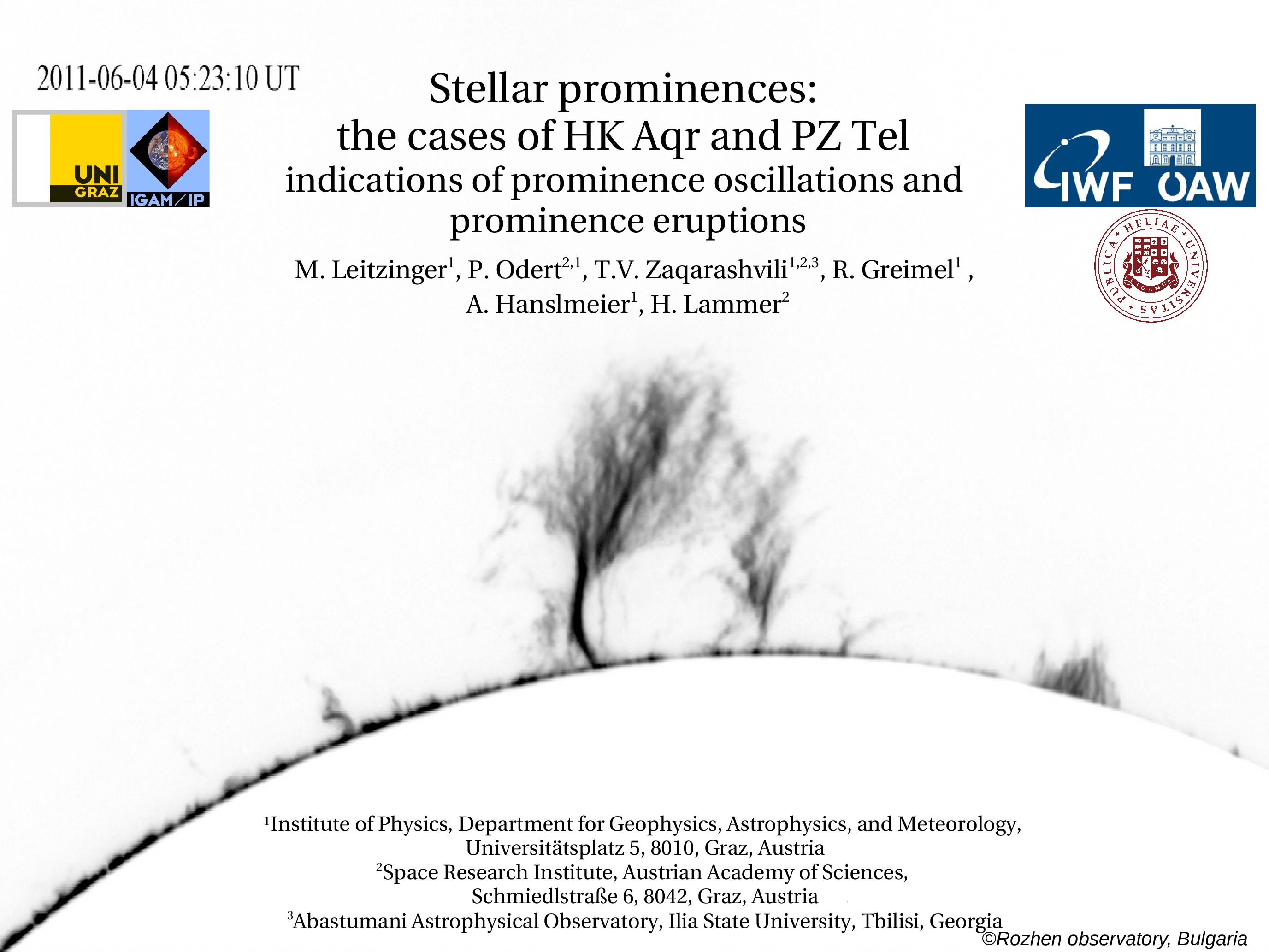Date of upload:
09.06.2016
Co-author:
P. Odert, T. Zaqarashvili, R. Greimel, A. Hanslmeier, H. Lammer
Abstract:
Prominences are manifestations of solar/stellar coronal magnetic fields. Coronal magnetic field supports cool dense prominence plasma against gravity, which may be kept for several rotations (quiescent prominences) or may be ejected because of disturbances in the stellar plasma causing the plasma to accelerate very fast (eruptive prominences).
On the Sun, prominences are known to exhibit oscillations, so-called small- and/or large-amplitude oscillations, which show amplitudes of a few km/s for small amplitude oscillations and >20 km/s for large amplitude oscillations. The periods of large amplitude oscillations are in the range of 6-150~min. So far no prominence oscillations have been detected on stars. With existing observatories the stellar analogue of large-amplitude oscillations can be searched on stars which are known to host prominences. Furthermore, stars hosting prominences are good targets for searching for stellar mass ejections, because erupting filaments and mass ejections (CMEs) are closely correlated on the Sun, moreover the CME core often represents the filament itself.
We present the analysis of six nights of optical spectroscopic monitoring of the young and fast rotating stars HK Aqr and PZ Tel, which are known to host prominences. We detect on both stars prominences. In two prominences on HK Aqr we detect indications of prominence oscillations reminiscent to solar large amplitude oscillations, at least with period. We detect no oscillations in the prominences of PZ Tel. Furthermore we find no eruptive prominences on both stars. We explain the non-existence of eruptive prominences using geometrical considerations.
